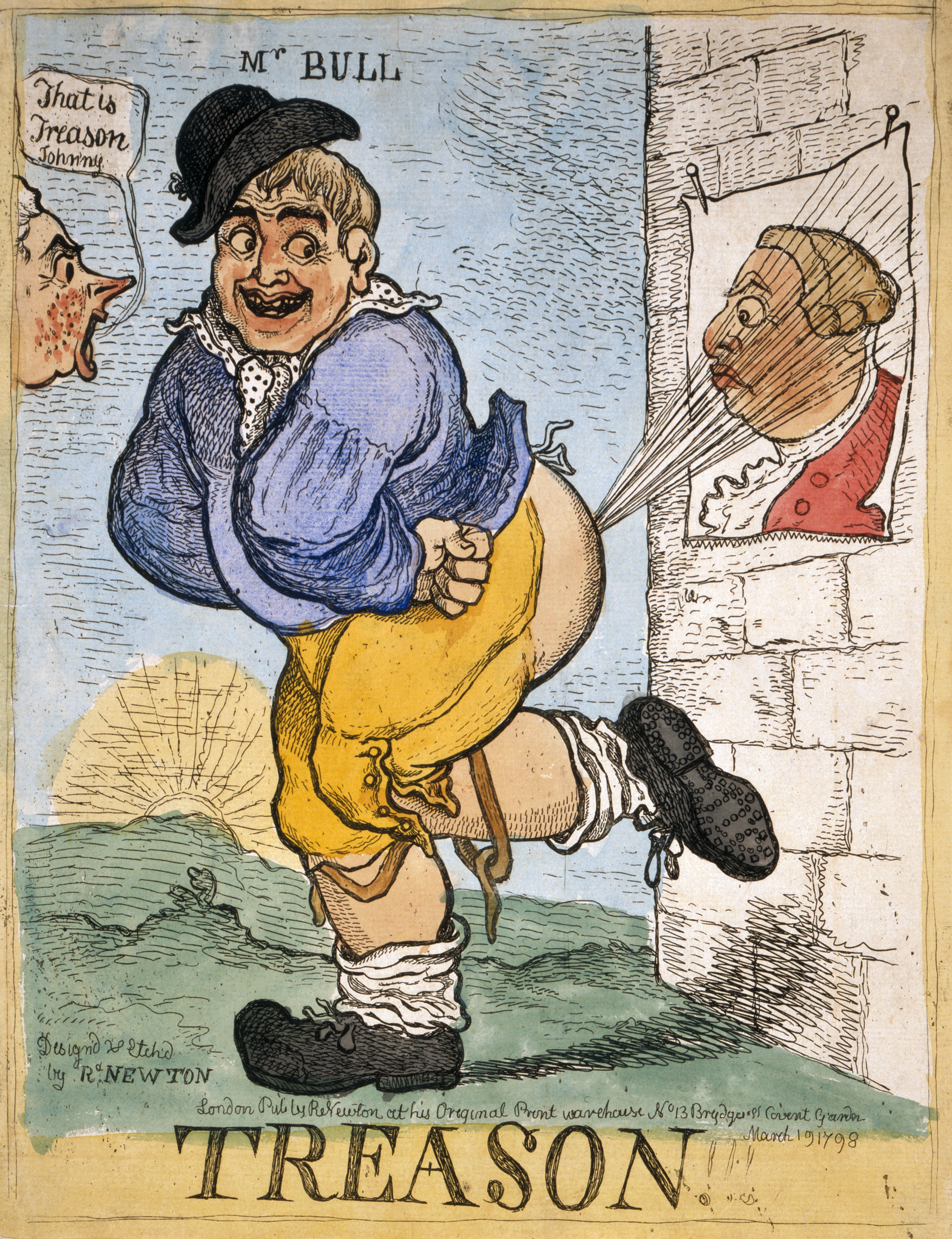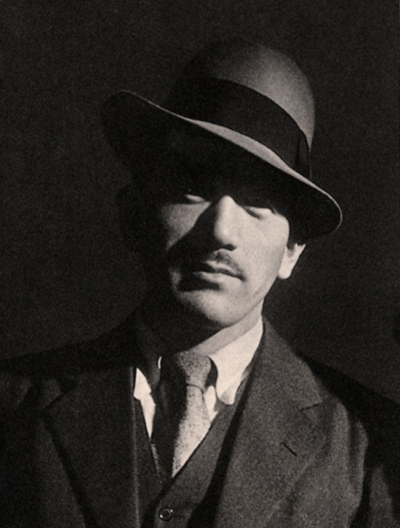|
Pull My Finger
Pull my finger is a joke or prank regarding flatulence in which a victim is asked to pull the finger of the joker, who simultaneously breaks wind so as to suggest a causal relationship between the two events. A comparable activity is attributed to a character in a short story by Mordecai Richler (collected in ''The Street'', 1969): A variation on this joke appears in Yasujirō Ozu's film ''Good Morning'' (1959). Schoolboys ask each other to push their foreheads, responding with an expulsion of gas. In 2008, an iPhone app from Air-O-Matic called Pull My Finger was one of the most popular apps in Apple's App Store, purchased over 50,000 times in less than one week. It allowed users to pull a virtual finger, activating the sound. there is a legal battle between Pull My Finger and InfoMedia's iFart Mobile app over the use of the phrase. In 2015, an MRI study of how knuckles trigger popping sounds was jokingly called the "pull my finger study." In the Disney movie ''Lightyear ... [...More Info...] [...Related Items...] OR: [Wikipedia] [Google] [Baidu] |
Joke
A joke is a display of humour in which words are used within a specific and well-defined narrative structure to make people laugh and is usually not meant to be interpreted literally. It usually takes the form of a story, often with dialogue, and ends in a punch line, whereby the humorous element of the story is revealed; this can be done using a pun or other type of word play, irony or sarcasm, logical incompatibility, hyperbole, or other means. Linguist Robert Hetzron offers the definition: It is generally held that jokes benefit from brevity, containing no more detail than is needed to set the scene for the punchline at the end. In the case of riddle jokes or one-liners, the setting is implicitly understood, leaving only the dialogue and punchline to be verbalised. However, subverting these and other common guidelines can also be a source of humour—the shaggy dog story is an example of an anti-joke; although presented as a joke, it contains a long drawn-out narrative ... [...More Info...] [...Related Items...] OR: [Wikipedia] [Google] [Baidu] |
1959 In Film
The year 1959 in film involved some significant events, with '' Ben-Hur'' winning a record 11 Academy Awards. Top-grossing films (U.S.) The top ten 1959 released films by box office gross in North America are as follows: Events * January 23 – Republic Pictures releases its last production, ''Plunderers of Painted Flats''. *January 29 – Walt Disney's ''Sleeping Beauty'' premieres, their most expensive film to date and the first animated film to be shot in Super Technirama 70. It initially ends up losing money for the studio due to its high production costs. However, it would eventually gain a cult following and is now considered one of Disney's great classics. *April 30 – François Truffaut's ''The 400 Blows'' opens the 1959 Cannes Film Festival bringing international attention to the French New Wave. * June 4 – The Three Stooges release their 190th and last short film, ''Sappy Bull Fighters''. * June 7 – A contract between Paramount and Jerry Lewis Productions ... [...More Info...] [...Related Items...] OR: [Wikipedia] [Google] [Baidu] |
Practical Jokes
A practical joke, or prank, is a mischievous trick played on someone, generally causing the victim to experience embarrassment, perplexity, confusion, or discomfort.Marsh, Moira. 2015. ''Practically Joking''. Logan: Utah State University Press. A person who performs a practical joke is called a "practical joker" or "prankster". Other terms for practical jokes include gag, rib, jape, or shenanigan. Practical jokes differ from confidence tricks or hoaxes in that the victim finds out, or is let in on the joke, rather than being talked into handing over money or other valuables. Practical jokes are generally lighthearted and without lasting effect; they aim to make the victim feel humbled or foolish, but not victimized or humiliated. Thus most practical jokes are affectionate gestures of humour and designed to encourage laughter. However, practical jokes performed with cruelty can constitute bullying, whose intent is to harass or exclude rather than reinforce social bonds through ... [...More Info...] [...Related Items...] OR: [Wikipedia] [Google] [Baidu] |
Flatulence Humor
Flatulence humor, or Rude humour (more commonly known as fart humor) refers to any type of joke, practical joke device, or other off-color humor related to flatulence. History Although it is likely that flatulence humor has long been considered funny in cultures that consider the public passing of gas impolite, such jokes are rarely recorded. It's been suggested that one of the oldest recorded jokes was a flatulence joke from the Sumerians that has been dated to 1,900 BC. Two important early texts are the 5th century BC plays ''The Knights'' and ''The Clouds'', both by Aristophanes, which contain numerous fart jokes. Another example from classical times appeared in ''Apocolocyntosis'' or ''The Pumpkinification of Claudius'', a satire attributed to Seneca on the late Roman emperor: He later explains he got to the afterlife with a quote from Homer: Archeologist Warwick Ball asserts that the Roman Emperor Elagabalus played practical jokes on his guests, employing a whoopee c ... [...More Info...] [...Related Items...] OR: [Wikipedia] [Google] [Baidu] |
Comedy
Comedy is a genre of fiction that consists of discourses or works intended to be humorous or amusing by inducing laughter, especially in theatre, film, stand-up comedy, television, radio, books, or any other entertainment medium. The term originated in ancient Greece: in Athenian democracy, the public opinion of voters was influenced by political satire performed by comic poets in theaters. The theatrical genre of Greek comedy can be described as a dramatic performance pitting two groups, ages, genders, or societies against each other in an amusing '' agon'' or conflict. Northrop Frye depicted these two opposing sides as a "Society of Youth" and a "Society of the Old". A revised view characterizes the essential agon of comedy as a struggle between a relatively powerless youth and the societal conventions posing obstacles to his hopes. In this struggle, the youth then becomes constrained by his lack of social authority, and is left with little choice but to resort to ruses w ... [...More Info...] [...Related Items...] OR: [Wikipedia] [Google] [Baidu] |
List Of Practical Joke Topics
This is a list of practical joke topics (also known as a prank, gag, jape or shenanigan) which are mischievous tricks or jokes played on someone, typically causing the victim to experience embarrassment, perplexity, confusion, or discomfort. Practical jokes differ from confidence tricks or hoaxes in that the victim finds out, or is let in on the joke, rather than being fooled into handing over money or other valuables. Practical jokes or pranks are generally lighthearted, reversible and non-permanent, and aim to make the victim feel foolish or victimised to a degree, but may also involve cruelty and become a form of bullying if performed without appropriate finesse. Practical jokes 0–9 * 2004 Harvard–Yale prank A * Alhokm Baad Almozawla * April Fools' Day * List of April Fools' Day jokes B * Berners Street hoax * Bingo Shooting Device * Black fax C * Caltech–MIT rivalry * Candid Camera * Capping stunt * Josiah S. Carberry * Chewing gum bug * Chinese finger trap ... [...More Info...] [...Related Items...] OR: [Wikipedia] [Google] [Baidu] |
Buzz Lightyear
Buzz Lightyear is the main character in the ''Toy Story'' franchise created by Disney and Pixar mainly voiced by Tim Allen. He is a Superhero toy action figure based on the in-universe media franchise consisting of a blockbuster feature film and animated series, a Space Ranger. He is the only ''Toy Story'' character in all of the franchise's animated films, including spin-offs, although his friend Woody is the main protagonist in all of the four films of the series. In ''Toy Story'' (1995), unlike most other toys, Buzz initially believes himself to be the "real" Buzz Lightyear, and comes to terms with actually being just a toy; in ''Toy Story 2'' (1999), Buzz encounters other Buzz Lightyear action figures from the toyline who similarly believe themselves to be "real", including one of the character's in-universe archenemy and father: Emperor Zurg; in ''Toy Story 3'' (2010), set ten years later, Buzz explores a romance with cowgirl figure Jessie, while his Spanish mode i ... [...More Info...] [...Related Items...] OR: [Wikipedia] [Google] [Baidu] |
Lightyear (film)
''Lightyear'' is a 2022 American computer-animated science-fiction action-adventure film produced by Walt Disney Pictures and Pixar Animation Studios, and distributed by Walt Disney Studios Motion Pictures. The film is a spin-off of the ''Toy Story'' film series, but does not take place in the same fictional universe as them; rather, it is presented as a film that some of the characters in the main ''Toy Story'' films have seen. ''Lightyear'' centers on the character Buzz Lightyear, who in this film is human and not a toy. The film was directed by Angus MacLane (in his feature directorial debut) and produced by Galyn Susman, from a screenplay and story written by MacLane and Jason Headley, both of whom co-wrote the latter with Matthew Aldrich. It stars Chris Evans as the voice of the titular character, with Keke Palmer, Peter Sohn, Taika Waititi, Dale Soules, James Brolin, and Uzo Aduba in supporting roles. The film follows Lightyear operating as a space ranger who, after be ... [...More Info...] [...Related Items...] OR: [Wikipedia] [Google] [Baidu] |
Good Morning (1959 Film)
is a 1959 Japanese comedy film co-written and directed by Yasujirō Ozu. It is a loose remake of his own 1932 silent film '' I Was Born, But...'', and is Ozu's second film in color. Plot The film takes place in suburban Tokyo, and begins with a group of boy students going home. The film steers into a subplot concerning the local women's club monthly dues. Everyone in the neighborhood club believes that Mrs Hayashi, the treasurer, has given the dues to the chairwoman, Mrs Haraguchi, but Mrs Haraguchi denies it. They gossip amongst themselves who could have taken the money, and speculate that Mrs Haraguchi could have used the money to buy for herself a new washing machine. Later Mrs Haraguchi confronts Mrs Hayashi for starting the rumor and ruining her reputation, but Mrs Hayashi states that she ''has'' indeed handed the dues money to Haraguchi's mother. Only later does Mrs Haraguchi realize it was her mistake (her mother being quite senile and forgetful), and she goes to apo ... [...More Info...] [...Related Items...] OR: [Wikipedia] [Google] [Baidu] |
Prank
A practical joke, or prank, is a mischievous trick played on someone, generally causing the victim to experience embarrassment, perplexity, confusion, or discomfort.Marsh, Moira. 2015. ''Practically Joking''. Logan: Utah State University Press. A person who performs a practical joke is called a "practical joker" or "prankster". Other terms for practical jokes include gag, rib, jape, or shenanigan. Practical jokes differ from confidence tricks or hoaxes in that the victim finds out, or is let in on the joke, rather than being talked into handing over money or other valuables. Practical jokes are generally lighthearted and without lasting effect; they aim to make the victim feel humbled or foolish, but not victimized or humiliated. Thus most practical jokes are affectionate gestures of humour and designed to encourage laughter. However, practical jokes performed with cruelty can constitute bullying, whose intent is to harass or exclude rather than reinforce social bonds throu ... [...More Info...] [...Related Items...] OR: [Wikipedia] [Google] [Baidu] |
Yasujirō Ozu
was a Japanese film director and screenwriter. He began his career during the era of silent films, and his last films were made in colour in the early 1960s. Ozu first made a number of short comedies, before turning to more serious themes in the 1930s. The most prominent themes of Ozu's work are marriage and family, especially the relationships between generations. His most widely beloved films include ''Late Spring'' (1949), ''Tokyo Story'' (1953), and ''An Autumn Afternoon'' (1962). Widely regarded as one of the world's greatest and most influential filmmakers, Ozu's work has continued to receive acclaim since his death. In the 2012 ''Sight & Sound'' poll, Ozu's ''Tokyo Story'' was voted the third-greatest film of all time by critics world-wide. In the same poll, ''Tokyo Story'' was voted the greatest film of all time by 358 directors and film-makers world-wide. Biography Early life Ozu was born in the Fukagawa, Tokyo, the second son of merchant Toranosuke Ozu and his wife ... [...More Info...] [...Related Items...] OR: [Wikipedia] [Google] [Baidu] |








